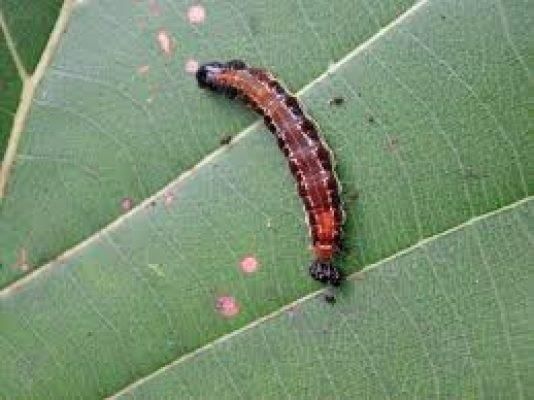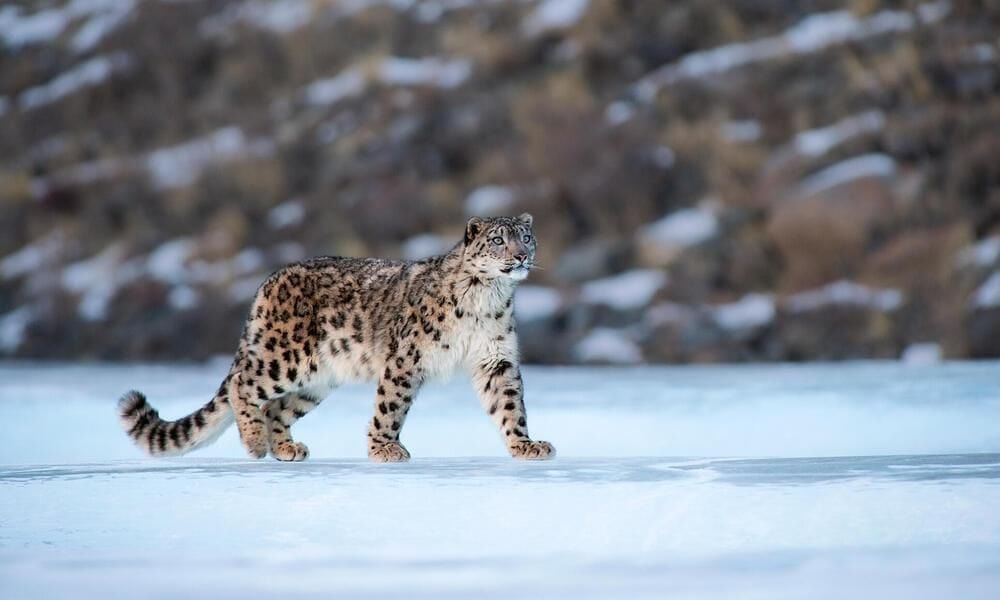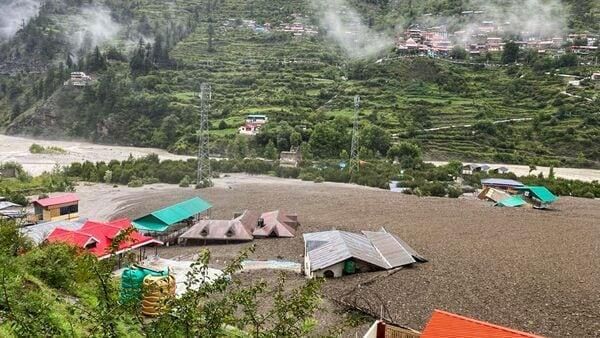Environment and Ecology (Part 1): August 2025 Current Affairs | Current Affairs & General Knowledge - CLAT PDF Download
GS3/Environment
Indian Flapshell Turtle
Why in News?
A rare sighting of an albino Indian flapshell turtle, distinguished by its vibrant yellow shell and skin, was recently reported in a freshwater lake located in Chikodra village, Gujarat.
Key Takeaways
- The Indian flapshell turtle is a freshwater species primarily found in tropical South Asian countries.
- It is classified as Vulnerable on the IUCN Red List and is protected under several conservation laws.
Additional Details
- Scientific Name: Lissemys punctata
- Distribution: This species is mainly found in Pakistan, India, Sri Lanka, Nepal, Bangladesh, and Myanmar.
- Habitat: They inhabit shallow, quiet, often stagnant waters such as rivers, streams, marshes, ponds, lakes, and irrigation canals. These turtles prefer environments with sand or mud bottoms for their burrowing tendencies.
- Physical Features: The Indian flapshell turtle is identifiable by femoral flaps that cover its limbs when retracted into its shell. Its oval, soft shell indicates an evolutionary link to hard-shelled turtles.
- Size and Lifespan: They can reach lengths of up to 370 mm and typically live for around 20 years.
- Diet: These turtles are omnivores and are generally solitary. They are active during the day and show remarkable adaptability, capable of surviving extreme droughts for about 120-160 days.
- Conservation Status:
- IUCN Red List: Vulnerable
- CITES: Appendix I
- Wildlife (Protection) Act, 1972: Schedule I
Albinism, the condition observed in the turtle, is a rare genetic anomaly that affects melanin production, resulting in a lack of pigmentation in hair, skin, and eyes across various species including mammals, birds, reptiles, amphibians, and fish. This trait is a recessive mutation, occurring in approximately one out of every 10,000 births, necessitating both parents to carry the gene for an offspring to exhibit albinism. Some animals may show partial albinism, known as leucism, characterized by white fur or skin but typically with normal eye pigmentation.
The recent sighting of the albino Indian flapshell turtle not only highlights the uniqueness of this species but also underscores the importance of conservation efforts in protecting vulnerable wildlife.
GS3/Environment
District Flood Severity Index
Why in News?
Researchers from IIT Delhi and IIT Gandhinagar have developed a District Flood Severity Index (DFSI) to assess the impact of floods across various districts in India. This new index evaluates historical flood severity based on factors such as the number of people affected, the extent and duration of flooding, and the overall impact on local populations.
Key Takeaways
- The District Flood Severity Index accounts for the historical severity of floods in India.
- Parameters include the mean duration of flooding events, percentage of area historically flooded, total deaths, injuries, and district population.
- Developed using the India Flood Inventory with Impacts (IFI-Impacts) database.
- Identifying flood severity at the district level aids in effective flood management and planning.
Additional Details
- Parameters Used:The index incorporates several critical factors:
- Mean duration of flooding events in days.
- Percentage of the area historically affected by floods.
- Total number of deaths and injuries due to flooding.
- Population of the district.
- Key Findings:
- Patna ranks as the highest on the index, indicating significant historical flood impacts.
- Thiruvananthapuram, while having a high number of flooding events, does not appear in the top 30 districts for flood severity.
- Assam's Dhemaji, Kamrup, and Nagaon districts have experienced over 178 flooding events, averaging more than three events per year.
- Urban Flooding Factors: Urban flooding is attributed to both hydrometeorological reasons and poor urban planning.
The District Flood Severity Index is a crucial tool for understanding flood impacts at the district level, facilitating better management strategies and preparedness for future flooding events.
GS3/Environment
Bacterial Cause Behind Mass Starfish Deaths
 Why in News?
Why in News?
Since 2013, an alarming phenomenon has occurred along North America's Pacific coast, where over 5 billion starfish have died due to a wasting disease. This disease has now been linked to Vibrio pectenicida, a bacterium related to cholera.
Key Takeaways
- Over 5 billion starfish deaths recorded since 2013.
- Vibrio pectenicida identified as the causal agent of the disease.
- Major impact on the sunflower sea star population, which declined by 90%.
Additional Details
- About Starfish (Sea Stars):
- Taxonomy: Belong to the phylum Echinodermata; exclusively marine organisms.
- Species include: Brisingida, Forcipulatida, Velatida, Valvatida, and Spinuloside.
- Body Structure:
- Exhibits radial symmetry in adults and bilateral symmetry in larvae.
- Has a calcareous exoskeleton for protection.
- Features a water vascular system for respiration and circulation.
- Unique Features:
- Regeneration of lost limbs.
- Lack of blood or brain; nutrients circulated via seawater.
- Eyespots at arm tips to sense light.
- Tough skin made of calcium carbonate.
- Feeding Habits: Starfish can be carnivorous, detritivorous, or scavengers.
- Ecological Consequences:
- Starfish are keystone predators, especially of sea urchins.
- Their decline has led to increased sea urchin populations, causing overgrazing of kelp forests.
- This has resulted in biodiversity loss and reduced carbon sequestration.
This situation highlights the complex interdependencies in marine ecosystems, where the decline of a single species can lead to significant ecological consequences.
GS3/Environment
Teak Defoliator Moth and Its Biocontrol Solution
 Why in News?
Why in News?
The Kerala Forest Research Institute has successfully identified and mass-produced the Hyblaea puera Nucleopolyhedrosis Virus (HpNPV), providing an eco-friendly alternative to chemical pesticides. This innovative approach aims to prevent extensive defoliation of teak trees caused by the teak defoliator moth (Hyblaea puera).
Key Takeaways
- Hyblaea puera is a significant pest that severely affects teak trees and mangroves.
- The HpNPV virus offers a promising biocontrol method to combat this pest.
- Annual outbreaks of the moth lead to considerable economic losses in timber production.
Additional Details
- About Teak Defoliator Moth: This moth is a cryptic species recognized as a major pest of teak trees, impacting their growth and health.
- Impact on Teak Trees: The larvae of the moth initiate damage with the arrival of monsoon rains, leading to energy diversion from growth to leaf regeneration.
- Nature of Damage: The moths devour the leaves, often leaving only the midrib intact, significantly affecting the tree's health.
- Geographical Distribution: Native to South Asia and Southeast Asia, it is found in forests from India to Australia.
- Economic Impact: The teak defoliator causes substantial economic losses during its seasonal outbreaks, affecting timber production.
- Hyblaea puera Nucleopolyhedrosis Virus (HpNPV): This virus is recognized as a potential biocontrol agent that can cause lethal infections in pest larvae, preventing widespread defoliation. It can multiply extensively inside a single larva, releasing vast amounts of inoculum upon death.
The development of HpNPV represents a significant advancement in sustainable pest management, offering an effective solution to protect teak plantations from the destructive impacts of the teak defoliator moth.
GS3/Environment
Discovery of New Palm Species ‘Phoenix roxburghii’
Why in News?
A new palm species, ‘Phoenix roxburghii’, which was first described in the 17th-century botanical work Hortus Malabaricus, has recently been confirmed as a distinct species.
Key Takeaways
- The species is named after William Roxburgh, known as the father of Indian Botany.
- It is distributed across various regions including India’s eastern coast, Bangladesh, Gujarat, Rajasthan, and Pakistan.
- It can grow up to 12–16 metres, making it taller than Phoenix sylvestris.
Distinct Features
- Trunk: Solitary trunk.
- Leaves: Larger leaves and leaflets compared to other species.
- Flowers: Musty-scented staminate flowers.
- Fruits: Large, obovoid orange-yellow fruits.
Back2Basics: India’s Oil Palm Scenario
- National Mission on Edible Oils – Oil Palm (NMEO-OP) (2021): A centrally sponsored initiative aimed at increasing domestic crude palm oil (CPO) production to reduce import reliance.
- Targets:
- Expand cultivation area to 10 lakh hectares by 2025-26.
- Increase production from 0.27 lakh tonnes (2019-20) to 11.2 lakh tonnes (2025-26) and further to 28 lakh tonnes by 2029-30.
- Support Mechanisms: Includes Viability Price (VP), Direct Benefit Transfer (DBT), planting subsidy (₹29,000/ha), and special assistance for Northeast and Andaman regions.
- Cultivation States: Major production occurs in Andhra Pradesh, Telangana, and Kerala (accounting for 98% of output), with others including Karnataka, Tamil Nadu, Odisha, Gujarat, and Northeast states.
- Potential vs Current: India has a potential of 28 lakh hectares for palm oil cultivation, but only 3.7 lakh hectares are currently cultivated.
- Imports: India is the world’s largest palm oil importer (9.2 million tonnes in 2023-24), with palm oil constituting 60% of its edible oil imports, predominantly sourced from Indonesia, Malaysia, and Thailand.
- Unique Advantage: Palm oil yields are significantly higher, being 5× higher than traditional oilseeds.
UPSC 2021 Question
With reference to ‘palm oil,’ consider the following statements:
- 1. The palm oil tree is native to Southeast Asia.
- 2. Palm oil is a raw material for some industries producing lipstick and perfumes.
- 3. Palm oil can be used to produce biodiesel.
Which of the statements given above are correct?
Options: (a) 1 and 2 only (b) 2 and 3 only* (c) 1 and 3 only (d) 1, 2, and 3
This discovery not only adds to the biodiversity knowledge but also highlights the importance of palm oil in India's agricultural and economic landscape.
GS3/Environment
The Impact of Plastic Pollution on Health
Why in News?
Plastic pollution has emerged as a critical environmental crisis, drawing attention globally as discussions in Geneva involving 180 countries have failed to reach a binding legal agreement to address it. This reflects significant divisions on whether to focus on waste management alone or include production in the treaty.
Key Takeaways
- Plastic pollution now includes serious health implications, moving beyond traditional waste management concerns.
- Plastics contain over 16,000 chemicals, with limited knowledge about many of them.
- Microplastics have been found in human blood, breast milk, placenta, and bone marrow, underscoring the urgency of the issue.
Additional Details
- Global Plastic Treaty Deadlock: The recent negotiations have revealed a divide between countries focusing on waste versus those advocating for production regulations. This deadlock highlights the challenges in establishing a unified approach.
- Health Risks: Chemicals found in plastics, such as bisphenols and phthalates, are linked to various health issues including thyroid dysfunction, hypertension, and certain cancers. Studies involving over 1.1 million individuals are ongoing to further understand these connections.
- The Microplastic Menace: Defined as plastics smaller than 5 mm, microplastics are increasingly found in human biological samples, raising concerns about their potential health impacts.
- Policy Responses: Various countries, including India, have initiated measures such as bans on single-use plastics and are navigating the complexities of international negotiations regarding plastic pollution. However, health impacts are often sidelined in these discussions.
The ongoing discussions in Geneva signify a critical juncture in addressing plastic pollution. Ignoring the health risks associated with plastics creates a significant gap in policy. A comprehensive treaty that encompasses both production and health impacts is vital for mitigating the potential dangers plastics pose to human health in the 21st century.
GS3/Environment
Jellyfish and Their Impact on Marine Ecosystems
Why in News?
Recently, a significant nuclear power plant in France was temporarily shut down due to an unexpected issue involving jellyfish, which exemplifies the ecological challenges posed by these organisms.
Key Takeaways
- Jellyfish are resilient marine organisms belonging to the phylum Cnidaria.
- They possess a simple anatomy and unique features such as stinging tentacles and jet propulsion.
Additional Details
- Characteristics of Jellyfish:
Jellyfish are simple invertebrates that exhibit radial symmetry, allowing them to sense their environment from all directions. They lack complex organs such as brains, blood, and hearts.
- Anatomy:
Their bodies are composed of three distinct layers: the outer epidermis, a middle layer known as mesoglea that is jelly-like and elastic, and an inner layer that completes their structure.
- Ecological Impact:
Massive jellyfish blooms lead to disruptions in marine ecosystems by:
- Reducing biodiversity
- Outcompeting native species
- Collapsing fish and invertebrate populations
- Reasons for Jellyfish Blooms:
- Global Warming: Increased ocean temperatures have resulted in a surge of plankton, the primary food source for jellyfish, enabling their population growth.
- Overfishing: The removal of species like tuna and sea turtles, which prey on jellyfish, has allowed jellyfish populations to thrive unabated.
- Plastic Pollution: Jellyfish's ability to tolerate low oxygen levels in polluted waters has further facilitated their population increase.
Overall, the presence and proliferation of jellyfish represent both a unique biological phenomenon and a serious ecological challenge, highlighting the intricate balance within marine environments.
GS3/Environment
India to Launch First Sustainable Aviation Fuel Plant
 Why in News?
Why in News?
The Indian Oil Corporation (IOC), the largest refiner and fuel retailer in India, is preparing to initiate commercial production of Sustainable Aviation Fuel (SAF) at its Panipat refinery by December 2025. This facility has recently been certified for the production of biofuel from used cooking oil (UCO). By the end of the year, IOC aims to achieve an annual production capacity of 35,000 tonnes of SAF, sourcing raw materials from large hotel chains, restaurants, and food companies that typically discard cooking oil after its first use. This development represents a crucial advancement in India’s green aviation initiative, contributing to a transition towards cleaner energy and reducing reliance on traditional jet fuel.
Key Takeaways
- IOC is set to produce 35,000 tonnes of SAF annually by 2025.
- The facility is certified to manufacture biofuel from used cooking oil.
- This initiative is part of India’s broader green aviation strategy.
Additional Details
- Sustainable Aviation Fuel (SAF): SAF is a bio-based alternative to conventional jet fuel, derived from renewable feedstocks such as used cooking oil, agricultural residues, and non-edible crops.
- SAF is a “drop-in fuel,” allowing it to be blended with existing jet fuel and used in current aircraft without requiring modifications.
- International aviation bodies certify blending limits (typically up to 50%) to ensure safety and performance.
- Environmental Benefits: 100% SAF can reduce greenhouse gas emissions by up to 94%, depending on the feedstock and production technology.
- Economic Opportunities: The initiative creates new markets for farmers through non-edible crops and waste collectors for used cooking oil.
- Export Potential: European airlines are expected to be primary buyers of IOC’s SAF, with plans to tap into global export markets as demand increases.
- Regulatory Compliance: Starting in 2027, airlines must offset emissions beyond 2020 levels, making SAF blends a key compliance method.
IOC's SAF plant will initially meet India's 1% SAF blending target for international flights by 2027, as set by the National Biofuel Coordination Committee (NBCC). The committee has indicated targets of 1% blending in 2027 and 2% in 2028. As the market matures, domestic SAF blending is expected to follow after international targets are established. However, challenges such as UCO collection from small eateries and high production costs remain. Additionally, while IOC is starting with UCO, the company is also exploring alcohol-to-jet (ATJ) technology for sustainable fuel production.
GS3/Environment
What is Halman Apricot?
Why in News?
Recently, a shipment of 1.5 metric tonnes of Halman apricots has been exported to Saudi Arabia, Kuwait, and Qatar, marking a significant milestone for this unique fruit.
Key Takeaways
- Halman apricot is a variety of apricot (Prunus armeniaca L.) that is indigenous to Ladakh.
- This apricot variety is renowned as one of the finest in the world.
Additional Details
- Origin: The Halman apricot was introduced to Ladakh over a century ago, believed to have come from China or Central Asia.
- Distribution: It thrives in various regions of Ladakh, especially in the Sham area, with notable abundance in villages such as Dha-Hanu, Garkhon, Skurbuchan, Domkhar, Wanla, Khaltse, and Timosgang.
- Cultural Significance: The apricot is cherished for its rich flavor and versatility, playing an essential role in Ladakhi cuisine, traditional medicine, and festive rituals, thus forming a vital part of the region's agricultural heritage.
- Nutritional Benefits: Halman apricots are a rich source of essential vitamins, including Vitamin C and Vitamin E, as well as minerals like potassium, magnesium, and iron. They also provide dietary fiber and antioxidants, contributing to overall health.
The Halman apricot not only represents a unique agricultural product of Ladakh but also showcases the region's rich cultural and nutritional heritage.
GS3/Environment
Key Facts about Saltwater Crocodile
Why in News?
The estimated population of saltwater crocodiles, recognized as one of the largest reptiles globally, has seen an increase in the Sundarban Biosphere Reserve (SBR) according to a recent survey conducted by the State’s Forest Department.
Key Takeaways
- Saltwater crocodiles are the largest and heaviest living reptiles.
- Scientific Name: Crocodylus porosus
- Commonly referred to as the estuarine crocodile, marine crocodile, or saltie.
- They are apex predators with an opportunistic hypercarnivorous diet.
Additional Details
- Distribution: These crocodiles are native to saltwater habitats and brackish wetlands, found along India's east coast, across Southeast Asia, and extending to the Sundaic region, northern Australia, and Micronesia.
- Physical Features:
- The average male saltwater crocodile measures about 5 meters in length and weighs around 500 kg.
- Females are smaller, averaging just under 3 meters in length and weighing less than 100 kg.
- They typically have a dark, greenish-brown coloration with lighter underbellies, aiding in camouflage within their aquatic environments.
- Equipped with thick, armored skin made of tough scales for protection.
- These reptiles are solitary, particularly adult males, and are known for being highly territorial.
- Conservation Status: Listed as Least Concern on the IUCN Red List.
- Recent reports indicate 213 direct sightings of saltwater crocodiles in the Sundarbans in 2025.
Overall, the thriving population of saltwater crocodiles in the Sundarbans highlights the success of conservation efforts in the region.
GS3/Environment
Snow Leopard
 Why in News?
Why in News?
A recent three-year camera trapping study has confirmed the year-round presence and breeding activities of snow leopards in Jammu & Kashmir, with a particular emphasis on the Kishtwar Himalayas.
Key Takeaways
- The snow leopard is a medium-sized big cat native to the rugged terrains of Central and South Asia.
- It is known for its adaptations to cold, mountainous environments, earning it the nickname "ghost of the mountains."
Additional Details
- Distribution:Snow leopards prefer steep, rugged terrains with rocky outcrops and ravines, typically found at elevations of 3,000-5,000 meters or higher in the Himalayas. They inhabit 12 countries, including:
- China
- Bhutan
- Nepal
- India
- Pakistan
- Russia
- Mongolia
- In India, snow leopards are primarily located in the high-altitude, cold, arid, and rugged terrains of Jammu & Kashmir, Himachal Pradesh, Uttarakhand, Sikkim, and Arunachal Pradesh.
- Features: The snow leopard has pale grey fur with dark rosettes, providing camouflage against rocky environments. It can grow to a length of about 7 feet (2.1 meters), with its tail accounting for nearly half of that length. This tail aids in balance during climbing and provides warmth when resting.
- Snow leopards are solitary animals, preferring to live alone except during mating or when raising young.
The conservation status of the snow leopard is classified as Vulnerable by the IUCN, listed in CITES Appendix I, and included in Schedule I of the Wildlife (Protection) Act of 1972.
GS3/Environment
Asian Palm Civet
 Why in News?
Why in News?
Recently, the proceedings of the Kerala High Court’s Chamber 1 were interrupted due to an unpleasant odor caused by the Asian Palm Civet, highlighting its unusual impact in urban settings.
Key Takeaways
- The Asian Palm Civet is also known as the Toddy Cat or Common Palm Civet.
- This small, nocturnal mammal is native to South and Southeast Asia, including countries like India, Sri Lanka, and Indonesia.
- It plays a significant role in the coffee production process due to its unique ability to digest coffee beans.
Additional Details
- Scientific Classification: The scientific name of the Asian Palm Civet is Paradoxurus hermaphroditus.
- Physical Characteristics: This species has a long, slender body, short legs, and a pointed snout, weighing between 2 to 5 kg (4.4 to 11 lbs) and measuring approximately 53 to 71 cm (21 to 28 inches) in length, including the tail.
- Diet: As a nocturnal animal, it consumes a diverse diet that includes insects, small mammals, and fruits.
- Conservation Status: According to the IUCN Red List, the species is classified as Least Concern.
The Asian Palm Civet's interesting behaviors and ecological contributions, particularly in coffee cultivation, make it a noteworthy species despite its recent notoriety in Kerala.
GS3/Environment
Thattekad Bird Sanctuary
Why in News?
A recent comprehensive faunal survey at the Thattekad Bird Sanctuary in Ernakulam, Kerala, has expanded the official biodiversity checklist by adding nine new species records. This development highlights the sanctuary's ecological significance and ongoing efforts in wildlife conservation.
Key Takeaways
- Thattekad Bird Sanctuary is the first bird sanctuary in Kerala.
- It is also known as the Dr. Salim Ali Bird Sanctuary, named after India's renowned ornithologist.
- The sanctuary was officially notified in 1983.
- It is situated on the banks of the Periyar River at the foothills of the Western Ghats.
Additional Details
- Vegetation:The sanctuary features a variety of ecosystems, including:
- Tropical Evergreen Forests
- Tropical Semi-Evergreen Forests
- Moist Deciduous Forests
- Natural Habitats:Key habitats include:
- The Periyar River
- Lagoons and marshes formed by the Bhootattankettu dam reservoir
- Tropical semi and evergreen forests of the Western Ghats
- Major Peaks: The sanctuary is home to notable peaks such as Thoppimudi and Nyayapillimudi.
- Flora:Significant plant species include:
- Myristica dactyloides
- Hopea parviflora
- Tetrameles nudiflora
- Teak
- Rosewood
- Mahogany
- Fauna: The sanctuary is renowned for its diverse bird population, including endemic and rare species such as the Ceylon Frogmouth, Black Baza, Oriental Dwarf Kingfisher, and Bay Owl.
This survey not only enriches the biodiversity knowledge of the Thattekad Bird Sanctuary but also underscores its importance as a vital habitat for numerous bird species.
GS3/Environment
Uses of Wastewater Surveillance
Why in News?
The Indian Council of Medical Research (ICMR) is set to launch a wastewater surveillance initiative targeting 10 viruses across 50 cities within the next six months. Currently, the program is operational in five cities and aims to identify early signs of virus spread and growth trends, facilitating timely public health interventions.
Key Takeaways
- The ICMR will scale up wastewater surveillance to monitor various pathogens.
- Current focus includes COVID-19 and polio, with plans to track additional diseases linked to fever, diarrhea, and respiratory distress.
Additional Details
- About Wastewater:Wastewater refers to any water that has been impacted by human activities, originating from sources such as households, industries, and agriculture. It is essential to treat this used water before it can be safely released or reused.
- The ICMR's expanded wastewater and environmental surveillance (WES) initiative aims to detect early increases in virus load in communities, thus enhancing public health responses.
- The initiative will also include monitoring for the Avian Influenza Virus (AIV) in regions prone to outbreaks, establishing an early warning system.
- The growing emergence of pathogens in India is attributed to factors like population growth, urbanization, and environmental changes, necessitating such surveillance strategies.
- Wastewater-Based Epidemiology (WBE):WBE has gained prominence as a crucial tool for the early detection of disease outbreaks, especially post-COVID-19, providing valuable insights into community-level infection trends.
- This method is cost-effective and non-invasive, covering large populations and aiding in the identification of transmission hotspots, thus facilitating efficient resource allocation for containment.
- According to the CDC, even asymptomatic individuals shed pathogens through routine activities, which can be detected in wastewater samples collected before treatment.
- Within a timeframe of five to seven days, labs can uncover infections circulating within the community, enabling public health officials to implement appropriate interventions.
- Beyond disease detection, wastewater surveillance assists in identifying land-based pollution sources, thereby contributing to the protection of ecosystems.
- The United Nations Environment Programme (UNEP) advocates for expanding wastewater surveillance practices to enhance water quality monitoring.
- The World Health Organization (WHO) is also engaged in strengthening global capacities for wastewater surveillance, emphasizing its significance for public health and environmental sustainability.
In summary, wastewater surveillance is emerging as a vital strategy for early detection of infectious diseases, allowing for proactive public health measures and contributing to environmental management.
GS3/Environment
Anamalai Tiger Reserve
Why in News?
A recent year-long study conducted by the Tamil Nadu Forest Department has revealed that at least eight different species of fireflies contribute their bioluminescence to the forests of Anamalai Tiger Reserve.
Key Takeaways
- The Anamalai Tiger Reserve is located at an altitude of 1400 m in the Anamalai Hills, spanning the Pollachi and Coimbatore Districts.
- This protected area was designated a tiger reserve in 2007, highlighting its ecological significance.
- It features a rich diversity of vegetation, hosting various habitat types and flora.
Additional Details
- Location:The Anamalai Tiger Reserve is situated south of the Palakkad Gap in the Southern Western Ghats. It is bordered by:
- Parambikulam Tiger Reserve to the east
- Chinnar Wildlife Sanctuary and Eravikulam National Park to the southwest
- Several reserved forests of Kerala, including Nenmara, Vazhachal, Malayattur, and Marayur.
- Indigenous Communities: The reserve is home to six indigenous communities: Kadar, Muduvar, Malasar, Malai Malasar, Eravalar, and Pulayar.
- Vegetation:The area supports a variety of habitats, including:
- Wet evergreen forests
- Semi-evergreen forests
- Moist and dry deciduous forests
- Dry thorn and shola forests
- Unique montane grasslands, savannah, and marshy grasslands.
- Flora:The reserve boasts a rich diversity of flora, including wild relatives of cultivated species such as:
- Mango
- Jackfruit
- Wild plantain
- Ginger (Zingiber officinale)
- Turmeric
- Pepper (Piper longum)
- Cardamom
- Fauna:Key wildlife species found in the reserve include:
- Tiger
- Asiatic elephant
- Sambar
- Spotted deer
- Barking deer
- Jackal
- Leopard
- Jungle cat
The findings from the study underscore the ecological richness of the Anamalai Tiger Reserve and its importance in conserving biodiversity, particularly the unique firefly species.
GS3/Environment
Vaquita Conservation Efforts and Challenges
Why in News?
A recent report by the North American Environmental Commission has highlighted Mexico's inadequate measures to protect the critically endangered vaquita porpoise, with alarming estimates indicating that only ten individuals remain in the wild.
Key Takeaways
- The vaquita is the smallest porpoise species, making it the most endangered marine mammal globally.
- Its habitat is primarily limited to the northern Gulf of California, where it thrives in shallow waters rich in fish and shrimp.
- Current conservation status: Critically Endangered according to the IUCN.
Additional Details
- Vaquita Characteristics: Vaquitas are distinguished by their chunky bodies and rounded heads, lacking pronounced snouts, which sets them apart from dolphins. Their dorsal fins are notably taller and wider than those of other porpoises.
- Behavior: Known for their elusive nature, vaquitas tend to avoid boats and human interactions. They utilize echolocation, emitting high-frequency clicks for communication.
- Threats: The drastic decline in the vaquita population is largely attributed to the illegal fishing of totoaba, a fish species endemic to the Gulf of California, which is hunted for its valuable swim bladder.
With just ten vaquitas left, urgent action is required to prevent their extinction. The ongoing threats and challenges pose significant barriers to conservation efforts, underscoring the critical need for effective protective measures.
GS3/Environment
Fifth Session of Intergovernmental Negotiating Committee (INC)
Source: UN Media
Why in News?
The second part of the fifth session of the Intergovernmental Negotiating Committee (INC-5.2) focused on plastic pollution commenced in Geneva, Switzerland, highlighting the global efforts to address this pressing environmental issue.
Key Takeaways
- The INC was established by the United Nations Environment Programme (UNEP) in March 2022.
- It aims to create a legally binding treaty on plastic pollution by 2024.
Additional Details
- Formation: The INC is a UN-mandated entity allowing equal participation from all member states to collaboratively tackle plastic pollution.
- Output: The committee produces consensus-based treaties, which may include voluntary provisions, similar to earlier treaties like the Convention on Biological Diversity (1992) and the UN Framework Convention on Climate Change (1992).
- Mandate: The goal is to draft a treaty that addresses the entire life cycle of plastics, including production, design, usage, and disposal.
- Negotiation Process: The process involves various methods such as plenary sessions, technical group discussions, and stakeholder consultations.
Timeline of Sessions
- Uruguay: November–December 2022
- France: May–June 2023
- Kenya: November 2023
- Canada: April–May 2024
- South Korea: November–December 2024 (final session)
Key Debates and Goals
- Debates: Discussions revolve around the scope of the treaty, whether rules should be binding or voluntary, financing mechanisms, compliance measures, and differentiated responsibilities among nations.
- Goals: Establish global norms for production and waste management, set a combination of binding targets and voluntary approaches, create funding mechanisms for implementation, and promote a circular economy.
- Participation: The process includes input from governments, industries, civil society, Indigenous groups, and waste pickers to ensure a comprehensive approach to plastic pollution.
This session is a crucial step towards creating international standards and frameworks to combat plastic pollution, illustrating global commitment and collaborative efforts.
GS3/Environment
Industrial Accidents, the Human Cost of Indifference
Source: The Hindu
Why in News?
India's industrial landscape, encompassing oil refineries, chemical plants, factories, and construction sites, significantly contributes to the nation's economic growth. However, this progress is marred by a persistent and underreported tragedy: the preventable deaths of thousands of workers due to industrial accidents. These incidents stem from systemic negligence, regulatory inertia, and a societal undervaluing of workers' lives.
Key Takeaways
- Over 6,500 workers have died in industrial accidents in the last five years.
- States like Andhra Pradesh and Tamil Nadu have reported over 200 fatalities from major industrial mishaps.
- A 2022 study recorded 130 major chemical accidents, resulting in 218 deaths and over 300 injuries.
Additional Details
- Common Causes of Industrial Accidents:
- Lack of Fire No-Objection Certificates (NOC): Many factories operate without necessary clearances.
- Faulty firefighting systems: Missing alarms, extinguishers, or sensors.
- Absence of permit-to-work systems: Hazardous jobs undertaken without formal risk assessment.
- No training for workers: Especially among migrant or contract labourers, safety protocols are often ignored due to language barriers.
- Inaccessible fire exits: Often blocked or hidden by stored materials.
- No real accountability: Safety audits are often superficial, with rare prosecutions and negligible penalties.
- Comparative Perspective: In countries like Germany and Japan, safety is a fundamental industrial value, while India's approach remains largely reactive, focusing on measures only after disasters occur.
- Underlying Causes: National indifference and societal apathy towards the safety of economically marginalized workers contribute significantly to this crisis.
In conclusion, the means to prevent these tragedies already exist; what is lacking is the will from policymakers, industry leaders, and society to act decisively. Industrial safety is a fundamental right of every worker, and India must shift from a culture of reactive responses to one of prevention and accountability to ensure that these accidents are no longer the norm.
GS3/Environment
Rain, Landslides, and Flash Floods: Rising Risks
Source: Indian Express
 Why in News?
Why in News?
A flash flood in Dharali, Uttarkashi on August 5 resulted in the loss of at least four lives, with many others reported missing, alongside widespread destruction. Hundreds were displaced due to this incident, which is part of a series of extreme weather events, including one in Himachal Pradesh last month that claimed numerous lives and affected thousands.
Key Takeaways
- The precise cause of the Dharali flash flood remains unclear, though a glacial lake breach is a potential cause that has yet to be confirmed.
- The incident emphasizes the increasing disaster risks in ecologically sensitive areas and the challenges of implementing effective early warning and mitigation systems.
- Despite heavy rainfall in surrounding regions, Uttarkashi experienced below-normal precipitation prior to the flood.
Additional Details
- Rainfall Patterns: On August 5, the flood day, Uttarkashi recorded 32 mm of rain, which is double the daily normal but not classified as extreme rainfall. This contrasts with heavy rains in nearby districts on August 3 and 4.
- Cloudbursts: Defined by the IMD as at least 100 mm of rain within one hour over a 10x10 km area, cloudbursts are localized and may not be recorded if measurement instruments are absent in the affected zones.
- Flash floods in the Himalayas are typically caused by a combination of factors, including intense rainfall, landslides, steep slopes, and possible glacial breaks.
- In fragile terrains, even low-intensity rainfall can trigger landslides or floods due to saturated soil and eroding slopes.
- The young and geologically weak nature of the Himalayas makes them more susceptible to such disasters compared to older mountain ranges.
- Construction and heavy traffic further exacerbate the risk of flash floods during extreme rainfall events.
The situation in Dharali showcases the complexities of predicting flash floods, where even moderate rainfall can result in catastrophic events. While advances have been made in forecasting heavy rains and landslide predictions, the uncertainty in determining the likelihood of flash floods remains significant. Mitigation strategies such as restricting construction near riverbanks and relocating vulnerable settlements can help in reducing risks associated with these extreme weather events.
GS3/Environment
Flash Floods in Uttarkashi
 Why in News?
Why in News?
Recently, flash floods and mudslides devastated Dharali village in Uttarkashi, Uttarakhand, resulting in the tragic loss of at least four lives. The disaster damaged numerous buildings, shops, and hotels in the area. Unlike typical cloudbursts that often trigger flash floods in Uttarakhand's hilly regions, this incident was primarily caused by sustained heavy rainfall over three consecutive days.
Key Takeaways
- Uttarkashi's topography is vulnerable to landslides, exacerbating the effects of heavy rainfall.
- Flash floods can result from rapid rainfall, unlike regular floods, which develop more gradually.
- Climate change is believed to intensify rainfall patterns, increasing the risk of such disasters.
Additional Details
- Topography of Uttarkashi: The district ranges from 800 to 6,900 metres above sea level, characterized by rugged terrain, high ridges, and deep gorges. It is home to crucial water sources for the Ganga and Yamuna rivers.
- Rainfall Patterns: Uttarkashi receives an average annual rainfall of 1,289 mm, with the southwest monsoon from June to September contributing the most, particularly in southern areas.
- Flash Flood Characteristics: Defined as sudden and intense floods occurring within a short time frame, flash floods differ from regular floods by their rapid onset, usually within minutes or hours.
- Impact of Continuous Rainfall: The combination of ongoing rainfall and the fragile topography of Uttarkashi can trigger destructive mudslides and debris flows.
- Glacial Lake Outburst Floods (GLOFs): Satellite imagery indicates the presence of large glaciers and glacial lakes above the affected area, with experts suspecting a possible glacier burst contributing to the flooding.
- Cloudburst Clarification: The India Meteorological Department (IMD) defines a cloudburst as requiring 100 mm of rain within an hour over a small area. During the recent incident, only 2.7 mm was recorded in 24 hours, indicating this was not a cloudburst event.
The increasing frequency of such severe weather events highlights the urgent need for effective disaster management strategies, improved infrastructure, and proactive interventions to mitigate risks associated with climate change.
|
96 videos|932 docs|37 tests
|
FAQs on Environment and Ecology (Part 1): August 2025 Current Affairs - Current Affairs & General Knowledge - CLAT
| 1. What is the Indian Flapshell Turtle and its significance in the ecosystem? |  |
| 2. How does the District Flood Severity Index work in assessing flood risks? |  |
| 3. What are the potential bacterial causes behind mass starfish deaths? |  |
| 4. What is the Teak Defoliator Moth and its biological control measures? |  |
| 5. What is the significance of the new palm species ‘Phoenix roxburghii’ discovered? |  |















